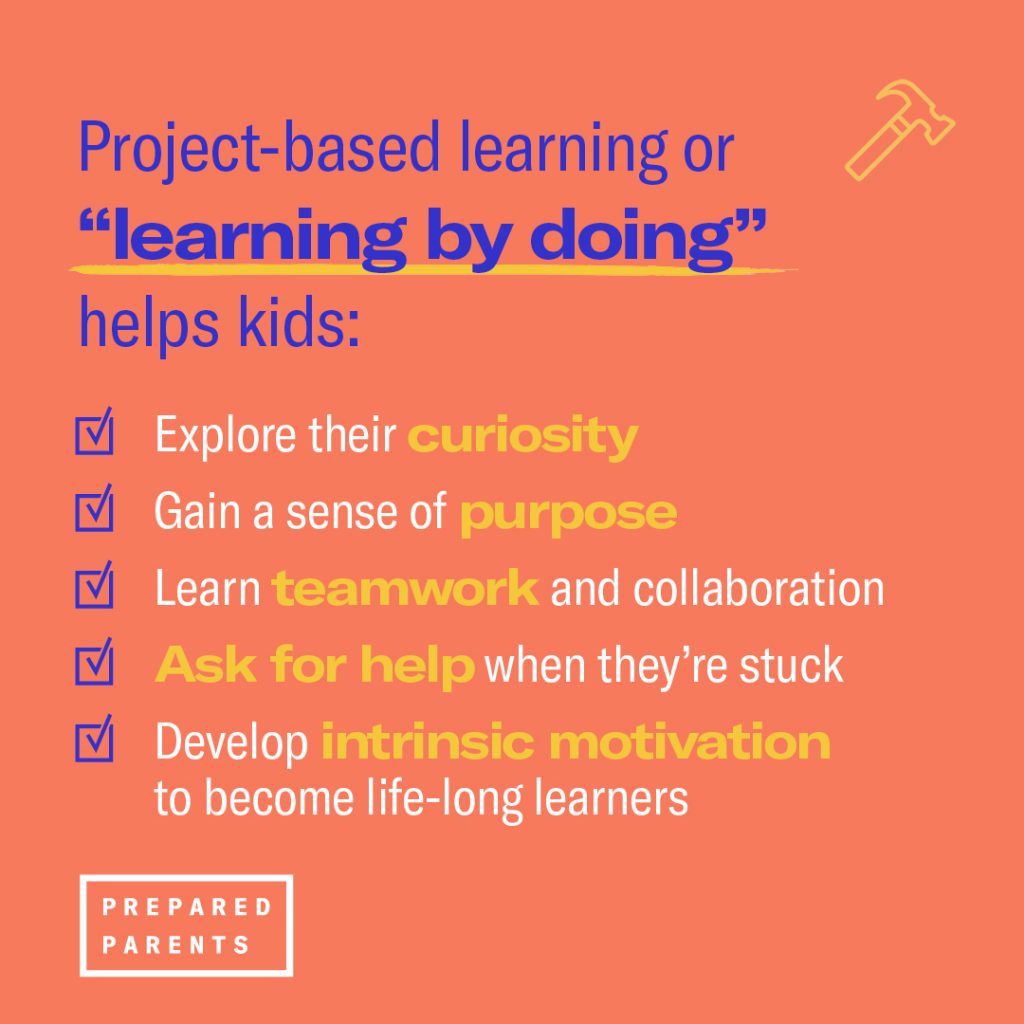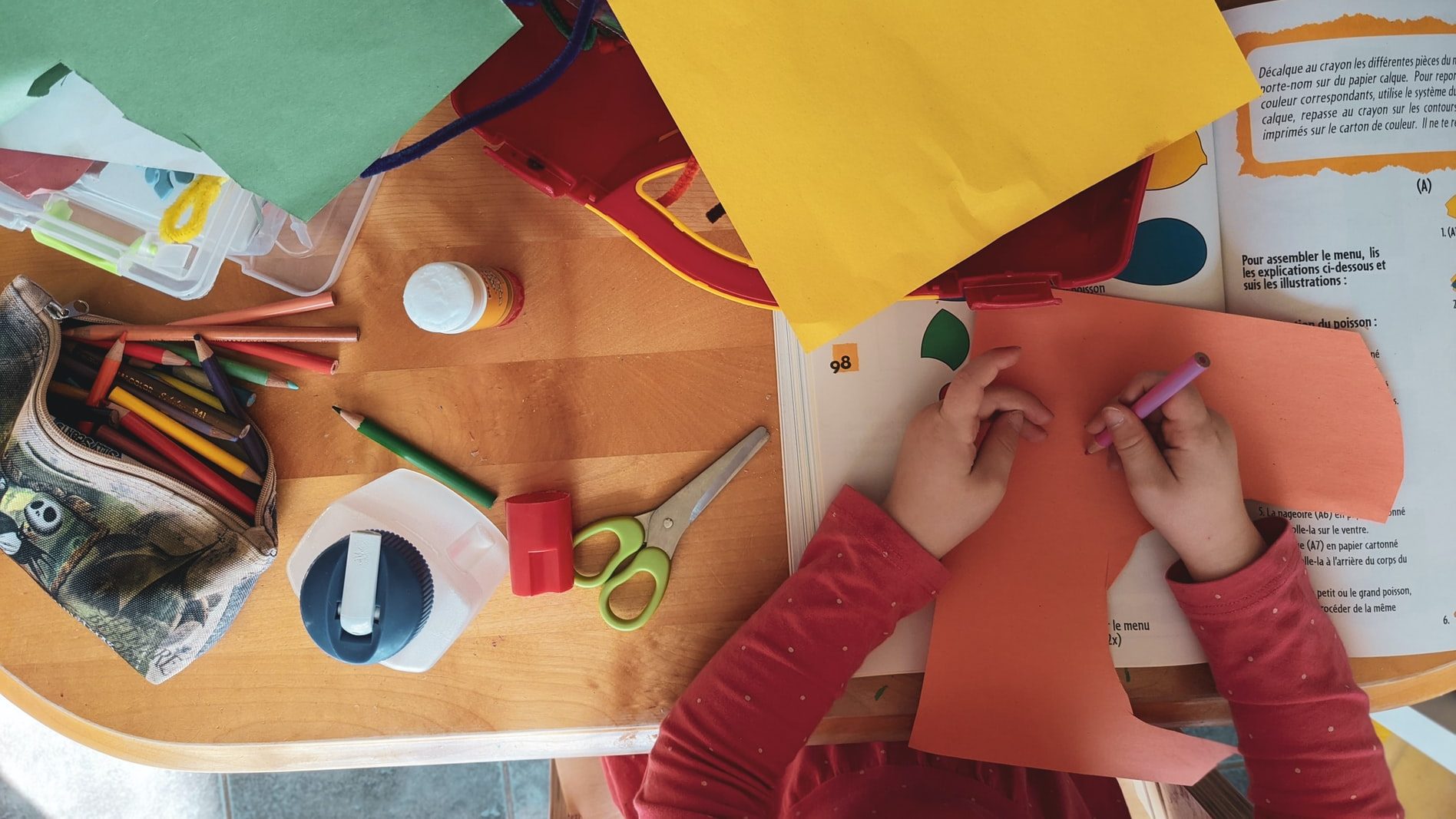Well-designed projects are the most effective learning approach to developing the skills and habits kids need to be successful in life. Luckily, your home is a classroom. There are real-world learning moments all around.
Today employers actively recruit candidates who show potential for leadership, critical thinking, and cross-cultural understanding. The top five skills kids need for future employment are:
- Creativity: Generating original ideas and solutions
- Persuasion: Convincing others to support your creativity
- Collaboration: Working as a team to reach a common goal
- Adaptability: Thriving in change and uncertainty
- Emotional intelligence: Understanding and modulating your emotions and understanding the emotions of others
Kids develop these skills through project-based learning (PBL)—exploring and solving real-world problems. This type of learning by doing helps kids.

Real-world projects allow kids to develop new skills and habits—like problem-solving and perseverance—and retain all the facts and information they are learning longer because they are seeing how it connects to real-life situations. Projects are also motivating because they follow kids’ innate curiosity.
The difference between how kids learn in many traditional classrooms and how they actually learn best can be summarized as the difference between passive and active learning.
As passive learners, students listen or absorb information as it is relayed or fed to them in lectures, readings, and workbooks. Passive learning promotes defining, describing, listening, and writing skills. But, it can disempower students and encourage convergent thinking—that there is only one right solution.
As active learners, students learn through discussion and collaboration, critical thinking, problem-solving, and connecting the dots between what they know and real-world, hands-on problems. Active learning is how we learn best and it encourages divergent thinking—that is, big picture thinking that develops various solutions to a topic.
To turn a real-world moment into a learning experience, begin with a problem, question, or challenge:
- Ask your kid to perform a task that directly addresses the problem. This will move them towards finding a solution.
- Give feedback that will lead to further addressing the problem so that they see improvement as they continue.
- Ask your kid to develop a way to present their solution to the problem. This can be a model, a designed website, a campaign, building plan, or even a business idea that can resolve the issue they’re looking at.
Middle and High School
- Analyze the news: Is it accurate? Biased? Helpful or not? Older kids can use their screen time to watch a few different network broadcasts, compare how they report information, and analyze accuracy.
- Build a bridge: Using items found around the house — popsicle sticks, Legos, K’Nex — build a bridge. Research how famous bridges like the Golden Gate, George Washington, Brooklyn, or London Bridge were built to compare construction. Make it a challenge. Can the bridge hold five pounds? Ten? Or even twenty?
- Design an app: Use developer tools to build your own app or game. Kids will learn problem solving skills and how to use technology.
Any Age
- Redesign your living space: Use technology to set up an alternate room arrangement and then try it out. This could be temporary, to accommodate work and family space, or kids may discover a better way to set up their room for a while.
- Cook and prepare meals: There’s a lot of math and science in cooking, like measurements, fractions, and chemical reactions. And kids can learn skills from cooking too.
- Do science experiments from household items: What’s around the house that kids can use to study science? Here’s a host of science experiments to try.
Try this one: experiment with germs: This experiment with bread is a valuable lesson in how germs affect us and why being sanitary is important. Ask your kids to choose 3 items around the house to wipe with a slice of white bread—one slice for each item. Wipe a 4th slice of white bread with soap and a 5th with hand sanitizer. Now seal the bread in separate ziplock bags and see what happens. Kids can photograph the reactions over time, and you and they can evaluate the results together.
Write and perform a play: Even young kids can use their imagination to write a play, or perform a play, movie, or book in the living room. Kids can create props and costumes from everyday home objects.

Learn about money: Ask kids to virtually shop for this week’s groceries. Start with feeding the family for the day. They can plan a menu, estimate the amount of food they need then go online to virtually shop. One word of caution: make sure the supermarket they link to does not have your credit card information stored. Otherwise, you may be paying for food you never intended to buy.
Take a family census: Ask kids to develop a list of ten questions to ask all the members of the family — both near and far. Once they’ve collected data, they can plot graphs and create charts using these tools from the National Center for Education Statistics. Maybe 15% of the family likes chocolate ice cream, 25% say their favorite color is blue. You’ll all learn a lot about what’s similar and what’s different in your family.
Create a family history book: Ask the kids to Facetime with grandparents and interview them to get more information about the family (Check out the Project: The Book of Time for interviewing tips!). Download photos, scan documents, and put them into a book. Share it online or get it printed to distribute. Have a book launch virtual party and invite all the relatives to join in through Zoom or Google hangouts.

Outside Projects
- Take a nature walk: Make it a scavenger hunt and look for early signs of the next season.
- Plant a garden: If you’re in the city, you can plant the garden in a window box. Kids can keep a garden journal to record planting, watering, and production. Side benefit: a nice salad to eat at dinner.
Post What You Learn.
- Practice meteorology: How is the weather changing? How do meteorologists predict weather? Kids can track this week’s weather through an app or online and look for trends in temperature, cloud formations, and hours of sunshine. Ask them to make some predictions about tomorrow’s weather and then record the forecast on video. Post the video to Facebook and ask friends around the world to do the same. This is a great way to compare weather patterns based on location.
- Create a Pinterest board: As kids practice curiosity and are finding new interests to explore, they can create a Pinterest board and share with others.
- Start an online group and study together: Whether preparing for AP exams or next week’s quiz, kids can start a group and do it together. Reach out to kids in other parts of the world and connect.
- Create Content: According to Common Sense Media, tweens, and teens are greater consumers of online content than creators. Now’s the time to create something on YouTube, TikTok, or Instagram.


